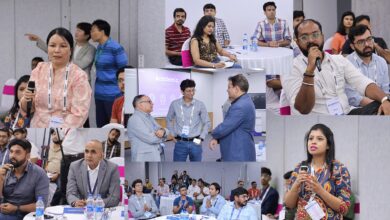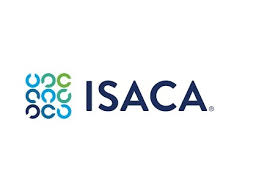Innovative SAS Hackathon Winners Solve Big Problems Through AI and Analytics
From saving lives of first responders to exploring manure recycling, the winners transformed data into decisions.

Mumbai, Maharashtra, India: The winners of the first-ever SAS global Hackathon delivered solutions to vexing problems by using big data AI. Teams from across the globe used cloud-native SAS® Viya® advanced analytics, Microsoft Azure, and other tools to improve people’s lives, enhance businesses and promote a healthy planet.
Throughout March, analytics leader SAS brought together hundreds of curious minds for the virtual Hackathon. The competition challenged data scientists, technology enthusiasts, and business visionaries in a host of industries to apply technology to solve real-world business and humanitarian problems.
SAS will name overall global winners in three categories – Industry, Data for Good, and Startups – at this week’s virtual SAS Global Forum 2021, the world’s premier analytics conference.
In addition to recognition, several teams will earn an invitation to partner with SAS to commercialize their ideas. These selected teams will have continued complimentary access to SAS Viya on Azure, expert guidance, and resources and support to further develop their applications.
“We launched our hackathons to inspire and innovate and help society and business,” said Bob Messier, Senior VP of Customer Engagement and Support at SAS. “The diverse teams in this global Hackathon sparked new ideas while addressing nearly 100 unique use cases. As a technologist, I’m amazed by the broad range of analytics technologies they used. All the teams deserve special recognition and thanks for their hard work and contributions.”
SAS announced regional winners for the Americas; Asia Pacific; and Europe, Middle East, and Africa (EMEA); as well as winners in the specific industry and technology sub-categories. The winners were chosen by more than 50 expert judges. To learn more about each winning team and view short videos of their projects, visit the SAS Hackathon page and search by team name.
Region
- Americas – NPK4Ever [US]. This team from North Carolina State University and startup Phinite used SAS Analytics to create a model for manure-based fertilizer recycling that can improve the environment and food production. The model identified potential manure sources from large-scale animal farms across the US, depots where this fertilizer could be consolidated and dried, and factories to which it could be shipped for processing. The model also analyzed varying prices for carbon offsets.
- Asia Pacific – Nanyang Polytechnic [Singapore]. This team of professors and students developed a SAS AI-powered system that applies pattern-recognition neural networks and machine learning to acoustic patterns for computer numerical control machines. Giving “ears” to these common manufacturing machines can help monitor for and detect anomalies (such as tool wear or break) in real-time, improving efficiency, predictive maintenance, and worker safety.
- EMEA – KPMG Austria. Environmental, social, and governance (ESG) criteria help investors find companies with values that match their own. The team from KPMG, a SAS partner, created a new data analysis feature for its ESG tool CLIMAID. The tool uses SAS machine learning and natural language processing to analyze web data, score firms across 39 categories, and build a model to predict ESG scores for any portfolio.
Global Sub-Industry
- Agtech – NPK4Ever [US]. See description above.
- Banking – ifb4Sustainability [Germany]. The team’s Positive Impact Analyzer for Banking tool helps the financial sector explore its role in achieving the United Nations’ Sustainable Development Goals. The Analyzer combines a Python model for calculating SDG index scores with a dashboard powered by SAS Visual Analytics to investigate and explore data on bank portfolios’ past, present, and future sustainability performance.
- Energy – everis/Enel [Spain/Italy]. A team from SAS partner everis used SAS Viya and open-source Jupyter notebooks to help energy company Enel develop predictive models that forecast external costs based on historical results. The team used SAS Viya to load, model, and visualize the data, and compared different models to determine the most accurate for long-term forecasting.
- Government/Public Sector – Hackanadians [Canada]. Collisions are the second-leading cause of US firefighter deaths, and hundreds die each year from collisions with emergency vehicles. Many of these accidents occur at intersections. This team of data scientists has created Traffic Lights for Life, an AI-based system that allows traffic lights to “listen” for emergency vehicles through audio sensing, in-cloud deep learning, and intersection control. The system protects first responders, who in turn protect us.
- Health care – Red Hot Chili Steppers [Canada]. This team from Pinnacle Solutions (a SAS partner) and the Ontario Tech University combined IoT sensors in a smart shoe insole with SAS AI and machine learning to create a risk model. With it, health care professionals can analyze a patient’s movement and create a risk score for loss of balance and falling.
- Health/Childhood Obesity – Co-winners Tupã Fit [Brazil] and Digital Community Twin [Sweden]. The increase in childhood obesity is a major concern throughout the world. Through the “Brasil 2030” project, researchers from São Paulo State University, NK Health Information System and Paraíba State University are using digital technologies powered by SAS AI to interpret data on childhood obesity and connect and educate people. This project is inspired by the work of researchers at Sweden’s Uppsala University, who used municipal and regional data to create a digital twin of Swedish society. Changes to the twin allow researchers to study the impact of new programs on children’s health and move toward eradicating childhood obesity.
- Insurance – Eagles [China]. This team created a machine-learning model to explore and monitor big data on health insurance claims. The model serves as an early-warning system to detect abnormal behaviors by doctors, including potential fraud.
- Manufacturing – LivNSense [India]. This team from a startup serving the manufacturing industry has created a solution combining industrial IoT and AI to optimize the performance – both in terms of better energy use and lower emissions – for steam- and gas-fired furnaces. Its iSense41 technology transforms these furnaces into cognitive equipment that power smart factories.
- Retail – 3KT [India]. Waiting in line or queuing – whether at a bank, toll plaza, retailer, ticket counter, or hospital waiting room – can be frustrating. This team of data scientists from SAS partner 3K Technologies analyzed video data with SAS Event Stream Processing and Python. They then used SAS Viya to explore the data and build and train their model for optimizing the queue experience.
- Telecom – Telefónica España [Spain]. A team of engineers used SAS Analytics to build, train and score models and generate forecasts, creating an updatable dashboard. With it, the team can monitor network performance, anticipate capacity and congestion problems before they occur, and estimate the resources needed to solve them. In this way, Telefónica can ensure the best possible service for its customers.
Global Technology
- Computer Vision – ITsAmsterdam [Netherlands]. A team including members from Amsterdam University Medical Center, Gelre Hospitals and ITsPeople created a computer-vision model to help surgeons improve patient safety during cholecystectomies, very common but major surgeries to remove the gallbladder.
- Data Visualization – Red Hot Chili Steppers [Canada]. See description above.
- Internet of Things (IoT) – LivNSense [India] – see description above.
- Natural Language Processing – Butterfly Data [Canada]. This team from SAS partner Butterfly Data Canada used the new conversational AI functionality of SAS Viya to build a chatbot to deliver cancer lifestyle advice for patients and their families and friends. It provides statistical data from across Canada, nutritional information, directions to local health care services, and links to trustworthy websites.
Each team’s use case was evaluated on variety of criteria based on the Lean Canvas business model, including overall problem and solution, technology showcased, unique value, market potential, innovation level, and business plan viability.
Innovation at the intersection of caring, curiosity, and collaboration
SAS’ first ever global Hackathon featured participants from more than 30 countries, with experience ranging from novice to expert. They included SAS customers, partners, and startups, as well as dozens of students from universities such as NC State, Uppsala, and Nanyang Polytechnic. Each team aimed to uncover bold new insights and create life-changing solutions using SAS’ industry-leading analytics.
“Along with solving big problems, this year’s global Hackathon was about creating the ultimate virtual learning and networking experience for refining existing skills and acquiring new ones,” said Einar Halvorsen, Global Hackathon Lead at SAS. “Gamifying the experience with some friendly competition, the Hackathon transcended participants’ backgrounds and geographies to foster collaboration and innovation that benefits everyone.”
“Demonstrating its commitment to and investment in education, SAS provided Hackathon teams with enablement resources and coaching on topics like AI, cloud environment, and industries,” said Peter Lundqvist, Global Hackathon Program Manager at SAS. During the monthlong Hackathon, each team had free access to:
- SAS Viya on Azure.
- SAS resources through the Digital Learning Portal, including nearly two dozen, curated SAS training courses and virtual learning labs.
- The Hacker’s Hub Community, providing additional support, networking, and information sharing.
- A SAS mentor.
This year’s event sponsors – fellow innovators Microsoft, Intel, and CoreCompete (part of Accenture) – provided additional services and technology.
To learn more about the Hackathon and to see which teams will win in the global categories of Data for Good, Industry, and Startup, register today for SAS Global Forum, a free virtual event over three regions and two weeks beginning May 18. One can also follow along via social media using #SASGF and #HackinSAS.![]()
Disclaimer: This content is distributed by Business Wire India.


